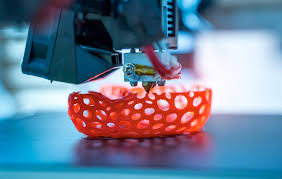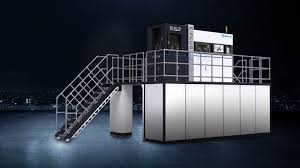Recently, scientists collaborated to create the world's first 3D printed "brain model," which models the structure of brain fibers and can be imaged using special magnetic resonance imaging (MRI). A scientific team led by the Medical University of Vienna and the Technical University of Vienna has shown in a study that these brain models could be used to advance research into neurodegenerative diseases such as Alzheimer's, Parkinson's, and multiple sclerosis. The research work was published in the journal Advanced Materials Technology.
Traditional magnetic resonance imaging (MRI) is primarily used to examine the structure and function of the brain without the use of ionizing radiation. In a special variant of MRI, diffusion-weighted MRI (dMRI), the direction of nerve fibers in the brain can be determined. However, since nerve fibers of different orientations overlap at intersection points, it is difficult to determine the direction of the nerve fibers correctly.

To solve this problem, an international team in collaboration with the Medical University of Vienna and the Technical University of Vienna developed a so-called "brain phantom," which is produced using a high-resolution 3D printing process. This brain model mimics the fine network of nerve cells in the brain, using rather unusual 3D printing methods such as two-photon polymerization to achieve high-resolution printing of microstructures.
This high-resolution 3D printing method provides researchers with very good models that can clearly resolve various neural structures when viewed under dMRI. This will bring new possibilities to medical research and diagnosis and is expected to provide more precise guidance for the treatment and diagnosis of neurodegenerative diseases.

Technology Value Observation
The upstream of the 3D printing market chain is raw materials and standard accessories. Resources are separated into two groups: metal-special products and non-metal-special materials. They are the raw products for fundamental accessories and 3D printing consumables. The midstream is the R&D and manufacturing of 3D printing consumables (steel powder, photosensitive material, engineering plastics, ceramic products, organic products, etc) and 3D printing devices; the downstream is 3D printing solutions and applications. The main application scenarios of 3D printing are in aerospace, mold and mildew spreading, Biomedical, auto, military and various other areas.
Scientists used special magnetic resonance imaging technology (dMRI) to simulate brain fibers and collaborated to create the world's first 3D-printed "brain model." This technology is a downstream link in the 3D printing industry chain.

Macro market insights
Global 3D printing technology is developing rapidly and is still in its early stages of growth.
3D printing technology can be traced back to the invention of the inkjet printer in 1976. Since the 1980s, the 3D printing industry has received widespread attention at home and abroad. Various 3D printing technologies have also been applied and developed in many industries and now cover many fields, such as manufacturing, medical care, education, aerospace, and military. Currently, global 3D digitization and 3D printing technology are still in their early stages of growth.
Rich downstream application areas
According to the "Wohlers Report 2021" questionnaire survey, the industry that uses 3D printing the most in 2020 is the automotive industry, which is far ahead, accounting for 16.4%. The consumer field/electronics field and aerospace industry followed closely, with 15.4% and 14.7% respectively. The fields refer to a wider range of other industrial fields not listed in the column, such as mineral processing, chemicals, water treatment, wood/paper and other industries that still need to be listed separately.

Most 3D printers cost more than $2,500
The price of 3D printers varies depending on the purpose. Generally, commercial printers are priced higher, ranging from tens of thousands to hundreds of thousands. Cheap 3D printers can already be purchased on domestic shopping websites, with prices ranging from 3,000 to 5,000 yuan. It comes with a quick start guide, corresponding software downloads, machine correction and other introductions. As the application of 3D printing technology becomes more and more widespread, the prices of various consumables and printers will inevitably show a downward trend. In the future, it is entirely possible that 3D printers, like traditional printers, will become affordable and accessible to every household. Equipment.
3DScienceValley's survey of enterprises shows that the Chinese market occupies a mainstream position in the purchase of high-end industrial-grade 3D printing equipment, with more than 44% of enterprises using industrial-grade 3D printers priced at more than US$100,000/unit.
Kmpass is a high-tech enterprise committed to the research and development, production, processing, sales and technical services of 3D printing materials. The company develops a variety of powder materials and chemicals. Provide OEM service. If you need high quality 3D printing powder, please feel free to contact us.



